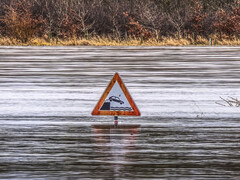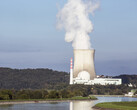Recording rainfall, measuring water levels, calculating daily weather models and finally sending out warnings via cell broadcast. The effort involved is high, but the return on investment is high if residents at risk can first secure their homes and then have enough time to get themselves to safety.
Of course, the system for detecting and warning of flooding is not absolutely reliable. Nevertheless, it offers a high level of protection that cannot be provided in regions without the necessary infrastructure. So if the warning time is not 5 days, but zero days, people, but also their property and livelihoods, are particularly at risk.
A new system for predicting the risk of flooding demonstrates that this does not have to be the case. Thanks to data accurate to the day and appropriately trained artificial intelligence, it can keep up with the best models currently available for forecasting severe weather conditions. However, this is also possible in regions of the world where such forecasts are not currently available due to the lack of a dense network of measuring stations. The time spent on the supercomputer for the daily calculations is also costly.
The researchers, including those from Google, the Helmholtz Center in Leipzig and the RAND Corporation in California, used weather data from an average of 30 years from 5,680 watersheds. This means a total of around 150,000 years of weather records - summarized in 60 gigabytes of data. And the collection continues to grow.
The training of the artificial intelligence on the Nvidia Tesla V100 graphics processor is said to have taken just a few hours. After that, around 10 hours are needed for the forecast. Lo and behold: when compared with past flood disasters, the AI achieves a higher hit rate than the classic weather forecasts carried out at the time. At the same time, the overall effort required is significantly lower.
Although this hardly helps regions with an already dense collection of weather data, it does help in many remote areas and especially in poor but densely populated areas. While there would be no change in the warning time in Europe, North America or East Asia, the time between a warning and rising floods would multiply in Africa, Central America or Southeast Asia, for example.
All that was needed for this study was publicly available data, which first had to be collected, and a high-performance processor costing just under €7,000 ($7,500). A great deal can be achieved with just a handful of the most important information on wind, humidity and temperature.















